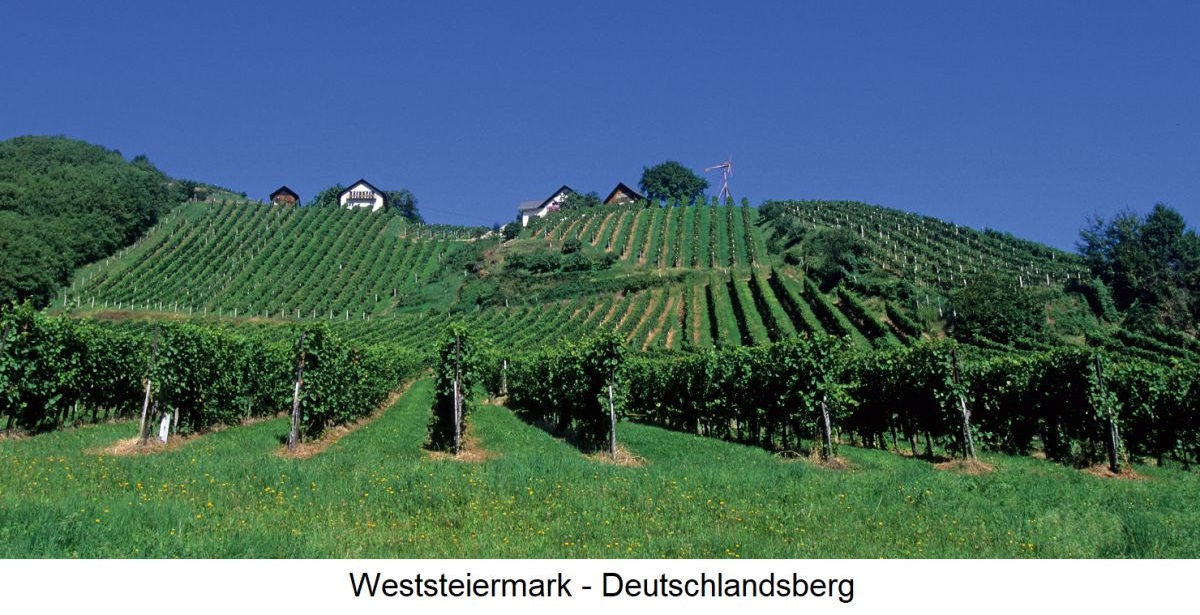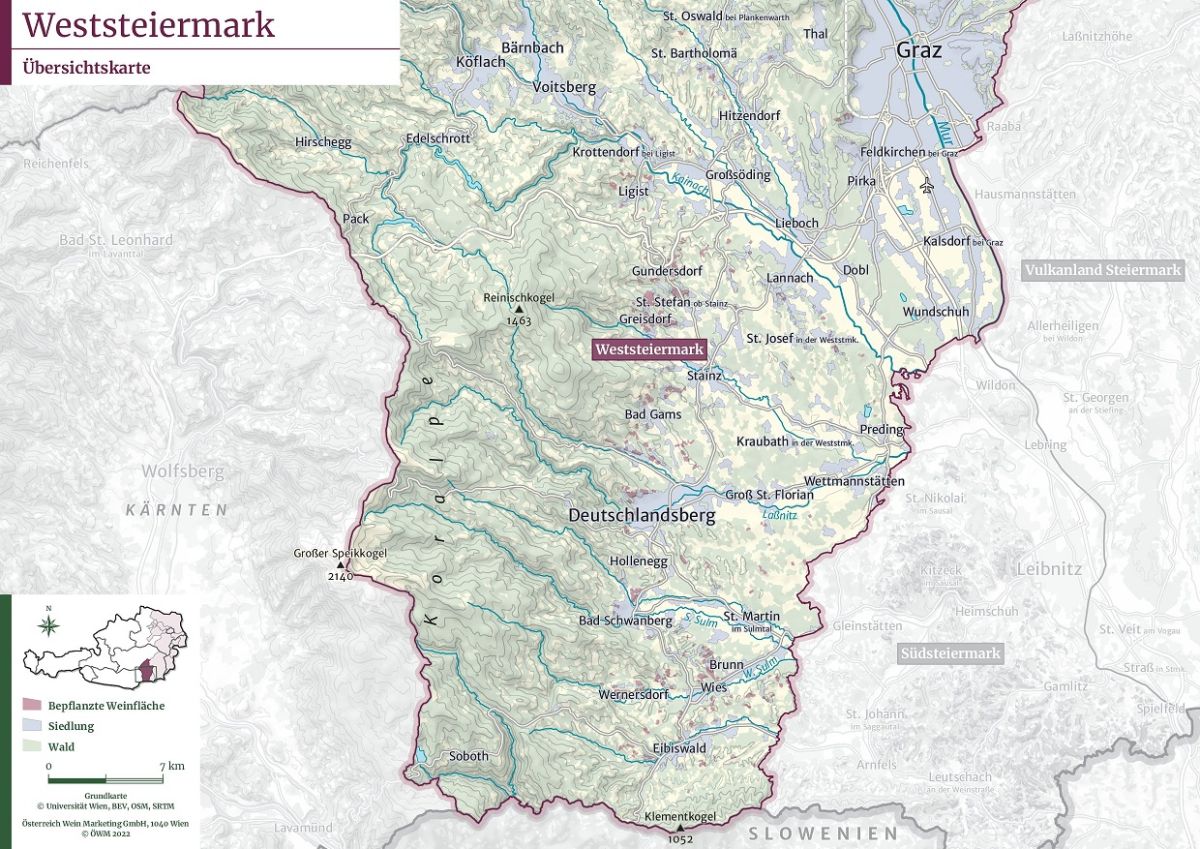Since the 2018 vintage, wine-legally defined DAC area (specific wine-growing region) in the Austrian wine-growing region of Styria (generic wine-growing region). See under Western Styria.
Western Styria
One of the three specific wine-growing areas in the Austrian province or generic wine-growing region of Styria. The elongated area borders Slovenia in the south. In fact, Western Styria is in the south-west of Styria; large parts of Upper Styria lie further west than Western Styria. The name derives from the time of the Habsburg monarchy, when Eastern and Western Styria together formed Central Styria of the Duchy of Styria, while Lower Styria, now Slovenian, was the mixed-language German-Slovenian area with the capital Maribor. A viticulture can be traced back to the fourth century BC, as the Illyrians, Celts and later the Romans already cultivated vines here. In 1235, viticulture on the Ligistberg was first mentioned in a document.

Climate & Soil
The location at the foothills of the Koralpe and the Reinischkogel protects against wind and causes strong warming during the day. The vineyards on gneiss and slate weathered soils extend in a narrow, long band between 420 and 600 metres above sea level southwards to the Slovenian border. Steep slopes and almost gorge-like valleys characterise the picture of the wine communities. The climate is Illyrian with southern European-Mediterranean influences and relatively high precipitation.

Wine-growing communities
Well-known wine-growing communities are Bad Gams, Deutschlandsberg (Riede Burgegg), Eibiswald, Groß St. Florian, Ligist, Marhof, Schwanberg, the Schilcher centre Stainz (Riede Engelweingarten), Stallhofen, St. Stefan ob Stanz, Gundersdorf, Greisdorf and Wies (Riede Lamberg). The "Schilcher Wine Route" begins in Ligist, passes through the most important villages and ends in Eibiswald. Characteristic are the "Kellerstöckln", which consist only of a pressing room with a wine cellar below.
Schilcher wine
Western Styria is the classic area of Schilcher wine, produced for centuries from the autochthonous Blauer Wildbacher variety, which is grown almost exclusively in Styria and occupies around two thirds of the vineyard area here. There is also an "Association for the Protection of the Classic Schilcher from Western Styria" with the trademark White Horse. The area covers the entire wine-growing region of Western Styria and, as a novelty outside of it, the cadastral municipality of Obergreith (municipality of Oberhaag in the district of Leibnitz) in the wine-growing region of Southern Styria.
Grape variety list
In 2022, the vineyards covered a total of 641 hectares of vines. Compared to 2016 with 546 hectares, this was an increase of 93 hectares (17%). Of these, white wine varieties account for 218 hectares (34%) and red wine varieties for 423 hectares (66%). Among the red wine varieties, the Styrian speciality Blauer Wildbacher dominates with almost two thirds of the total area, followed by Zweigelt and Blauer Burgunder. Among the white wine varieties, Pinot Blanc dominates, followed by Sauvignon Blanc and Welschriesling. There were no major changes in the ranking.
Grape variety
|
in Austria |
Voices of our members

The Wine lexicon helps me to keep up to date and refresh my knowledge. Thank you for this Lexicon that will never end in terms of topicality! That's what makes it so exciting to come back often.
Thorsten Rahn
Restaurantleiter, Sommelier, Weindozent und Autor; Dresden